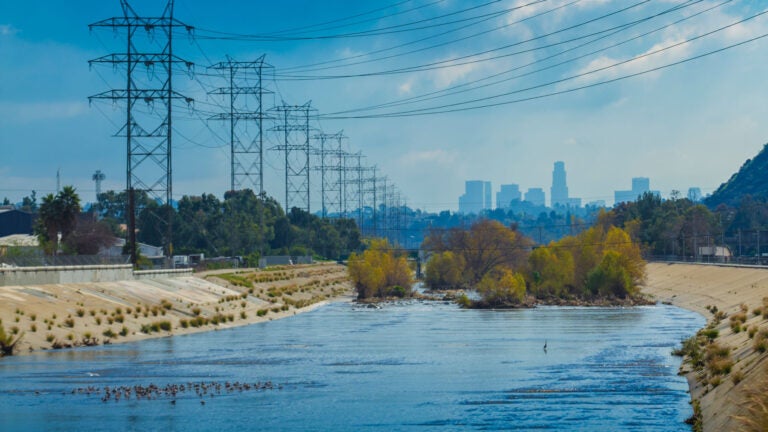
A USC study looked at the amount of water consumed during the production, processing, conversion and delivery of primary energy sources such as coal and wind in the U.S. (Photo/iStock)
The U.S. energy system uses a lot of water — but exactly how much?
Two researchers crunch the numbers to determine the enormous amount of H2O withdrawn from the environment
How much water is used to fulfill the energy needs of the U.S.?
To generate the energy delivered to each home, business and industrial entity each year, trillions of gallons of water are required for energy production, processing, conversion and transport. However, the exact amount of water withdrawn from the environment and consumed for each energy source has never been quantified — until now.
For each of the various energy sources, from coal to wind, USC Assistant Professor Kelly Sanders and the study’s lead author Emily Grubert, soon to be assistant professor at the Georgia Institute of Technology, quantified how much water is withdrawn, or removed, from water resources for the U.S. energy economy, how it is used and whether it is ultimately returned to its original water source or otherwise “consumed” through losses like evaporation.
Sanders and Grubert spent two years collecting and analyzing data from government reports and individual operators throughout the country for each of the energy sources used in the United States. Their work covers 99.4 percent of U.S. primary energy consumption in 2014 and is the first known comprehensive estimate of total water withdrawal and consumption by U.S. energy systems, detailed by energy source, water source and water source quality.
The researchers found that the U.S. energy system requires an estimated 58 trillion gallons of water withdrawals each year — enough to fill 88 million Olympic-size swimming pools. Of that, 3.5 trillion gallons of freshwater is consumed. That’s about 10 percent of total U.S. water consumption.
Detailed findings on energy consumption
Among the findings:
- Some energy resources are much more freshwater intensive than others. For example, irrigation associated with ethanol production (which makes up 2 percent of total energy delivered to U.S. consumers each year, according to data from the Energy Information Administration) and evaporation from hydropower reservoirs (1 percent of total energy delivered to consumers) consume a large amount of freshwater. Overall, they consume 28 percent and 18 percent of the total freshwater consumed by all energy sources, respectively.
- Although oil and natural gas consume large volumes of water (together representing 30 percent of the total water consumed by all energy sources), their total freshwater consumption is relatively low (16 percent of total freshwater consumed for the energy system) despite representing 80 percent of the total delivered energy to consumers. Most of the water consumed by the oil industry is of comparable or lesser quality than saltwater.
- Power plants represent a little more than one-third of total freshwater consumption for the U.S. energy system annually, but over 90 percent of energy-related water withdrawals.
- Emerging renewable energy sources — wind power and solar panels — require very little water to create a unit of electricity compared to U.S. power plants that typically use coal, nuclear and natural gas.
Energy sources
The amount of water used by each energy source is not regularly measured, which can make resource management challenging.
“This study is important because our energy system requires a lot of water to ensure that it is safe and reliable,” said Sanders, assistant professor of civil and environmental engineering and holder of the Dr. Teh Fu Yen Early Career Chair. “Without accurate data regarding the water requirements of our energy supply, derived with common analytical methods and definitions, it is difficult to anticipate how future investments in the nation’s energy economy might be impacted by changes in water availability.”
Sanders and her research group currently work with Grubert to turn these national water data into more detailed estimates for each U.S. county, as water availability and needs vary significantly from the dry southwest to the water abundant northeast.
Their findings, published in Environmental Science and Technology, could help policymakers manage resources and determine optimal energy investments by providing the energy sources to meet societal needs with the least amount of harmful impact on the environment.
An extended version of this story appears on the USC Viterbi School of Engineering website.



